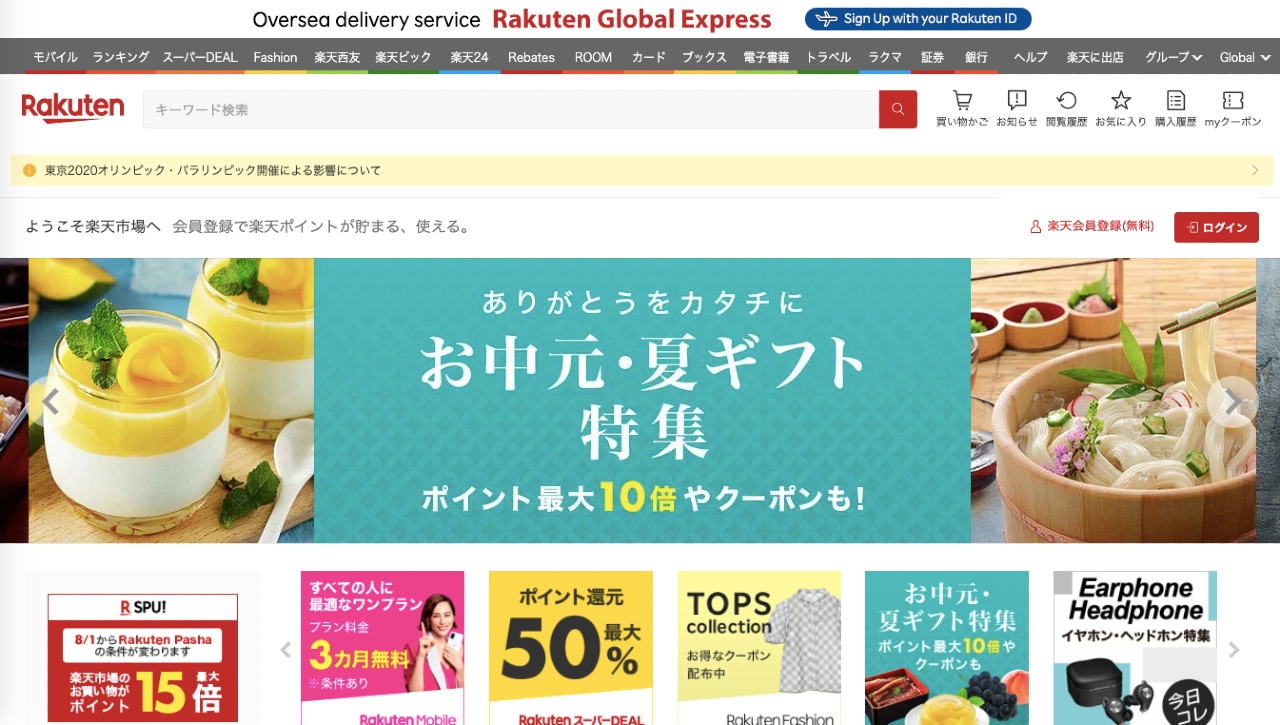SEO is a critical step in getting more traffic and sales through your website. Most business owners and marketers are well aware of this and spend a good amount of time creating online SEO blogs, performing on-site optimizations, and employing various strategies to get backlinks.
Running an ecommerce business also requires you to do all these things, but we’d say there’s another layer of context that must be worked into your process to achieve the best results. This is especially the case when you’re selling a completely new market like Japan.
In this post, we outline how you can best perform Japanese search engine optimization so that you have the best chance of converting visitors into customers.
Table of Contents
- How can Japanese search engine optimization help your ecommerce business?
- Integrate the right Japanese keywords
- Optimize your site content
- Factor in Japanese web design trends
- Japanese video content for SEO
- Customer reviews
- Japanese FAQ content
- Using content marketing for Japanese search engine optimization
- Final word
How Can Japanese Search Engine Optimization Help Your Ecommerce Business?
Beyond simply getting more people to your site, rolling out a comprehensive Japanese search engine optimization strategy that considers everything from the user experience (UX) to how keywords must be adjusted for the local context can have many benefits to your ecommerce businesses.
- Strong search positions signal to Japanese shoppers who are naturally more risk-averse than other cultures when it comes to consumer choices can signal to them that your brand has credibility. It’s a kind of endorsement that appears when searchers see your name for the first time in their searches.
- Better synergy between your web copy, published content, and your target keywords can elevate your content approach by making it more adjusted to people’s search intent — increasing the chance of people engaging with your pages.
- The best Japanese search engine optimization approach will consider how it can support all stages of the sales funnel. Targeting the correct intent with the right kind of content will influence shoppers to keep moving to the next phase of the journey (from awareness to conversion).
SEO helps you to understand shoppers and optimize your site’s usability. Insights gained for keyword research gives you a window into your shoppers’ desires. Sites that produce content that matches these desires quickly are more likely to make sales.
HB Pro Tip: We view the whole Japanese SEO process as another way to learn more about your customer base. When working with new clients entering Japan for the first time, we try to build on existing research and assumptions about key target demographics through the practical insights offered by SEO research and competitor analysis.
What’s Better? SEO or PPC for the Japanese Market?
Integrate the Right Japanese Keywords

Building a list of Japanese keywords that is relevant to your brand and likely to drive the right kind of potential customers to your site, or product listings within ecommerce platforms like Amazon, is a no brainer.
However, so many brands miss key opportunities to capture search traffic because they’re not working with native Japanese speakers from the start who can help them integrate terms and phrases they never considered when relying simply on translating an English keyword list.
When building a keyword strategy, a few things that only native Japanese marketers or creatives can bring to the table are:
- Different variations for certain terms (e.g. local product names)
- Japanese slang terms of colloquial variations that don’t appear in machine translations
- English loan words (words borrowed from English)
- English-based Japanese words that are unique to the country (interesting adaptations of English words)
- Formal and informal variations of keywords that are better suited to your target audiences (younger demographics may use different terms when making searches)
HB Pro Tip: If you already have a foundational keyword shortlist and want to use that as your base, you should still work with native Japanese speakers to expand and improve upon this list.
Optimize Your Site Content
When it comes to optimizing your site content, such as your homepage and major service pages, it’s necessary to run another round of checks to make sure that your approach is adjusted to the local context and the preferences of users who land on your site.
A few things to keep in mind are:
- The trigger words or terms that tap into customer motivations will need to be adapted for the Japanese market. It can vary across industries and products, but quality, reliability, and durability are attributes that many Japanese consumers prioritise over others. Without featuring certain terms in your copy, you may not make the initial connection you need to.
- Japanese shoppers are known for having a high aptitude for information processing. You might be able to gather this from how some traditional adverts and web pages are almost overwhelming with the sheer amount of information presented. Omitting things like product specifications, even though they may be unnecessary on your English website, might be disastrous for your Japanese one.
HB Pro Tip: You don’t need to sacrifice brand consistency when adapting your website for the Japanese market. Often, small adjustments and changes made within the framework of your brand guidelines can help you improve site performance while presenting a look and feel that still closely matches trends for web pages or ecommerce content in the Japanese market.
Learn More About Japanese Website Localization
Factor in Japanese Web Design Trends

Japanese search engine optimization is so much more than changing the text on your site and adjusting your keywords. Success might depend on changing your approach to design as well.
While brand consistency is an important concern, it’s not worth much if Japanese users are put off by a design that they can’t relate to or don’t feel inspired by. And you can still find ways to enforce consistency and synergy across markets in other ways like standardising color palettes, motifs, and other branding elements.
Below are a few major Japanese web design trends to consider when creating pages that are localized for native Japanese speakers and customers who exist within a whole different world of culture and trends.
| The Virtual Shopping Mall Experience | The virtual shopping mall experience is incredibly popular in Japan. Platforms like Rakuten offer customers a more immersive online shopping experience. The difference is individual merchants are allowed to offer customers more information, branding, promotional content, and an overall brand-adapted experience within the ecommerce site itself — reminiscent of the actual shopping mall experience.
Foreign merchants might find that their customers want more than the minimal stripped back approach found on platforms like Amazon where products are displayed directly next to competitors. |
| Manga and Animations | There is a wide acceptance of cartoons and all things cute and animated in Japan. All types of brands and businesses leverage animated characters and short jingles to promote themselves to customers. |
| Custom Typography | Standards for custom typography and calligraphy font styles are high in Japan. You’ll see this walking down any high street or commercial district where restaurants and shops each have their own unique display boards inviting shoppers inside. The trend is also found across many Japanese websites where typography is used to convey a brand’s unique personality. |
Learn More About Japanese Web Design Trends
Adapt UX to Your Audience
Despite what some people believe, the homogeneous nature of Japanese society doesn’t mean that all consumers can be marketed to in the same way. Websites perform the best when they have been created or optimized to suit the needs and preferences of specific audiences.
Japanese search engine optimization should focus on improving elements of your site in relation to specific demographics. Many companies continue to be influenced by international design trends popular across Europe and the US, prompting them to align their approach to web UX.
However, moving too far towards Western UX approaches might alienate older users who are used to a more traditional Japanese user experience.
HB Pro Tip: Japanese millennials are on the whole less financially stable than their parents or grandparents. A smart business move might be to slightly adjust your brand and content approach by being more accommodating to the UX preferences of older users. Complicated interfaces or homepages that are too “stark” and minimal might put off the users who could actually provide the greatest value to your ecommerce business.
Japanese Video Content for SEO

Video content can give customers a better understanding of your products, how they work, and whether they are suited to them. It’s becoming an important part of making that initial connection with users and when selling to Japanese shoppers who may be hesitant, helps to establish trust.
Good video content can also appear directly in Google search results and this can help to drive even greater volumes of traffic to your pages and increase engagement. A few ways to implement video include:
| Product Pages | Embedding videos in product pages can show people how your product functions or give users a 360° view of your item. Inspirational lifestyle content can also be used to tap into people’s motivational desires. |
| Articles and Blog Posts | Video reviews or behind-the-scenes style content can be featured in articles and blogs posts to help customers learn about you and your product’s major benefits. |
| Live Streaming | Some ecommerce websites might benefit from live streaming to interact directly with customers and build stronger relationships. This can be embedded on your site’s pages directly, or streamed on other channels like Youtube and then added to your site later. |
HB Pro Tip: The video content you create can be amplified by sharing it on other channels like your social media pages. You can chop up larger promotional videos into smaller chunks to give yourself more content to play with. Short snippets might function really well in your paid social ads on Instagram or Facebook.
Customer Reviews
It’s important to show customers that you are endorsed by others. Including customer reviews as well as any awards or accreditations your business has can help to do this. And placing these aspects more prominently on your site is a good move when you’re trying to gain traction amongst customers who may need convincing that you’re a reputable brand.
Japanese FAQ Content

An FAQ (Frequently Asked Questions) page made within the context of Japanese search engine optimization can be one of the most important elements of your online store. It can help to answer key questions your customers might have in a quick and efficient way, while boosting the chance for ranking well with specific search terms and search queries.
Using Content Marketing for Japanese Search Engine Optimization
It’s easier to market your brand and build strong links when you’re creating engaging blog posts, infographics, and other media assets that provide users with some kind of genuine value.
Having the right kind of content on your site will also improve the overall customer experience and help to offer a more rewarding customer journey. Other benefits of aligning your content marketing and Japanese SEO strategy include:
- Educate your audience about your services and products more effectively
- Personalise your content marketing by creating individual pieces of content based on the unique search intent of keywords
- Pull in traffic from other sources like your social channels (blogs published on your LinkedIn or Facebook page can drive more traffic to your ecommerce website)
- Create an online hub for Japanese blogs and resources to create a sense of community where people who enjoy your products or services can get to know you better
If you’re looking for more information on how you can adapt your content marketing strategy for Japan, take a look at our blog: Is Japanese Content Marketing Worth It? How to Build Important Brand Presence in Japan
Final Word
Japanese search engine optimization for any kind of website, including ecommerce sites (or even for product pages within platforms like Amazon or Rakuten) can take time to show results.
However, when done right, and if integrated with other aspects of your marketing approach like PPC and content marketing plan, you’re increasing the chances that you’ll be able to drive high levels of relevant traffic to your site.
Need help gaining traction for your business in Japan? Let’s chat on how we can help.